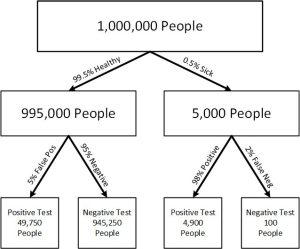Like most people, I have been following Russia’s war against Ukraine. I would like to share some quick thoughts on this subject.
Arnold Schwarzenegger produced an excellent video sharing his views. Recently I have been reading a lot about negotiations and communication. Although I am certainly no expert in those fields, in my opinion, Arnold expertly delivered his message. He showed empathy for Russian people and their situation. He used past events in his personal life to show that he could relate to them. And while relating to them, he delivered the cold, hard facts about the war. His content and delivery were nothing short of masterful.
Many Russians use the Telegram app for communicating with others. Arnold Schwarzenegger has a channel in Telegram, and his video is available on that channel. See the links below:
- Arnold Schwarznegger’s video on his Telegram channel
- Arnold Schwarznegger’s video on Twitter (Russians cannot access Twitter)
- Arnold Schwarznegger’s video on YouTube (Russians cannot access YouTube)
The Financial Times in London, UK provides free access to the “War in Ukraine.”
The New York Times has a channel on Telegram:
- New York Times Telegram channel
The channel provides key highlights of the articles from the New York Times with links to the articles. Even though others may not have subscriptions, they can still obtain key information of the latest developments.
If you have Russian friends or contacts, please share the above links.
In the past, I have helped a few dozen people with their university-entrance letters. Most of those students were from Eastern Europe, so I got to know several Russians. Even now many years later, I remain in regular contact with one former student who lives in Moscow. And well over a decade ago, I helped a Russian from eastern Russia with a Microsoft Excel problem. He and I have maintained regular contact over the years. Both of these two people are kind, polite, and generous. And neither supported the war. So, please, do not assume that all Russians support the war.
I use Telegram to share news and exchange views with them.
One of my dormant hobbies—that is, I have not been active in recent times—is photography. I got to know to an outstanding photographer in Kharkiv, Ukraine by the name of Alexandra Bolotina. She has won photography awards in the US. We communicate occasionally; she is one of the most wonderful and most optimistic people I have ever met. She is truly an incredible person. Because she lives in a city that is close to the Russian border and has a large proportion of its population that is Russian speaking, I expected minimal damage. I could not have been more wrong.
Here are some helpful links:
- Alexandra Bolatina in Facebook
- Alexandra Bolatina in Flickr
- Alexandra Bolatina in Instagram
- A Telegram channel dedicated to Kharkiv
Knowing how a specific person’s life has changed makes the war more personal to me. So that is why I shared a bit about her.
When you visit KharkivLife in Telegram, you will note that the language is Russian or Ukrainian. On my iPhone, I can select the Russian text and then choose to translate it to English. If is Ukrainian, then I need to copy and paste the text into my Microsoft Translator app. Both Russian and Ukrainian are used on Telegram. On my PC, I can copy the Cyrillic text, and then choose Google Translate or Microsoft Bing translator. Google allows for more text in one pass.
Here is the latest translated message that I saw:
Friends, we want to explain to you how the air alarm works.
- How fast do radar units receive an alarm? And how much time do we have to hide?
A few minutes or maybe even less minutes pass between the moment of fixing the aircraft/rocket and launching the siren. In fact, this is one phone call by special communication. After that, the siren in the right regions is included by local authorities.
The alarm indicates that enemy aircraft is either approaching a certain region, which can drop bombs or missiles, or it has already been fired with a missile.
- How are the cities in which the siren is included defined?
The air force records the route of the missile – approximately its course from point A to point B. Kharkiv has flown by – they turn it off, it flies further. And so step by step, this warning system operates throughout the country so that people at least have time to hide in shelter.
It is impossible to identify all threats.
However, the “oppressive majority” of our air Defence systems still see. ️The “air alarm” notification means that an enemy plane is flying, &dlquo;missile strike” means a flying missile. Most air alarms inform us exactly about the arrival of enemy aircraft. However, it should be taken into account that a cruise missile can also fly out of the plane.
It is necessary to hide in any case.
Or count on God.
Share this with your friends and subscribe to our channel.
One day, people are leading perfectly normal lives. And the next day, people are concerned about missiles launched toward them. What a cruel and unforgiving world some of us live in.
Wrapping up, here is what I would like you to take away from this post:
- If you have Russian friends or contacts, please share Arnold’s video, and Financial Times and New York Times links
- If interested, please see Alexandra’s photography
- If appropriate, share Alexandra’s links and the Kharkiv Telegram link
- Do whatever you can—even if you believe it is something small—to help foster peace and understanding
Thank you for your help and attention.


Recent Comments